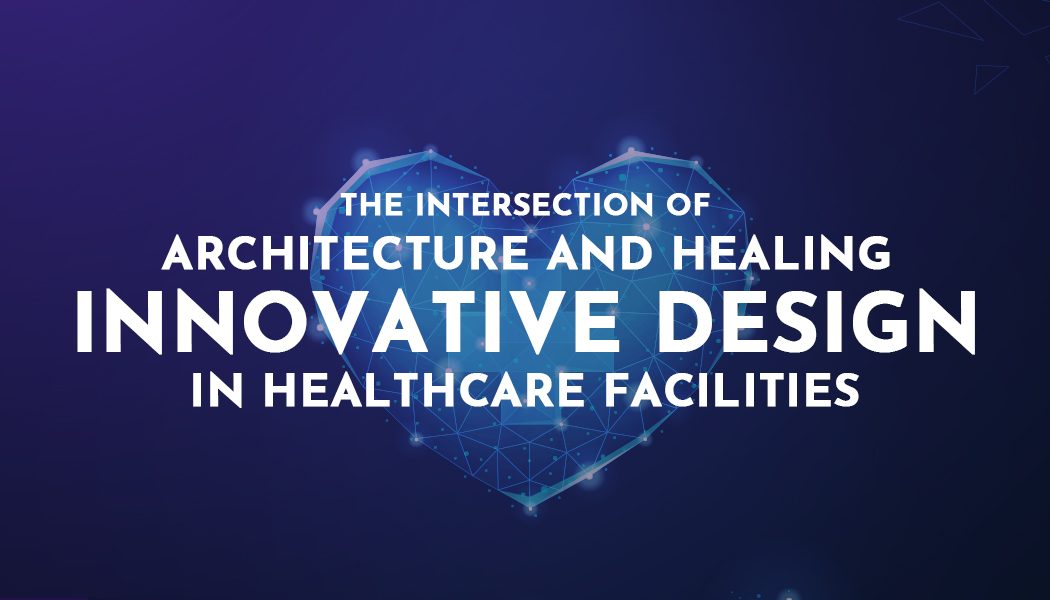The Intersection of Architecture and Healing: Innovative Design in Healthcare Facilities
In the realm of healthcare, the significance of architectural design transcends mere aesthetics, embodying a critical element in the healing process that directly influences patient outcomes, staff efficiency, and overall wellness. This intricate relationship between architecture and healing is not only shaping the evolution of healthcare facilities but is also driving innovation towards creating environments that are designed to treat and heal. By integrating elements such as natural light, open spaces, and patient-centered designs, modern healthcare facilities are revolutionizing patient care, promoting healing, and enhancing the well-being of both patients and healthcare providers.
Furthermore, the design of these facilities plays a pivotal role in the reputation management for doctors and healthcare institutions. A well-designed healthcare facility can significantly impact a doctor's professional reputation, as patients often equate the quality of their physical environment with the quality of care they receive. Thus, innovative architectural design becomes a powerful tool in attracting patients, improving patient satisfaction, and ultimately contributing to a positive public perception. The forward-thinking approach to healthcare facility design not only meets the functional needs of treatment but also addresses the psychological and emotional needs of patients, thereby fostering a holistic healing environment.
This comprehensive consideration of both medical and emotional healing processes within architectural design underscores the evolving standards of healthcare delivery and highlights the importance of creating spaces that support recovery, reflect the care provider’s commitment to patient well-being, and enhance the professional reputation of doctors through the physical manifestation of their dedication to advancing healthcare.
The Foundation of Healing Architecture
The concept of healing architecture is grounded in the understanding that the physical environment can significantly affect health, mood, and the healing process. Studies have shown that design elements such as natural light, green spaces, and quiet areas can reduce stress, lower blood pressure, and even decrease the length of hospital stays. Therefore, architects and healthcare planners are increasingly focusing on creating spaces that are not only functional but also therapeutic.
Design Elements that Promote Healing
Natural Light and Ventilation
Innovative healthcare designs prioritize the incorporation of natural light and fresh air, moving away from the closed, artificially lit corridors typical of old hospital designs. Large windows, skylights, and strategically placed green courtyards allow sunlight to permeate the building, creating a more cheerful and less institutional atmosphere. This not only aids in regulating patients' circadian rhythms, promoting better sleep and faster recovery but also provides essential vitamin D, which is crucial for physical health.
Green Spaces and Biophilic Design
Biophilic design, which integrates natural materials, greenery, and water features into the built environment, has been shown to have a profound impact on patient recovery and staff well-being. Gardens, indoor plants, and water elements can significantly reduce stress and anxiety, creating a sense of calm and connection to nature. These elements are increasingly becoming central to healthcare facility design, offering both aesthetic beauty and functional spaces for relaxation and contemplation.
Quiet Zones and Sound Management
Noise is a common and often overlooked stressor in healthcare environments. Innovative design solutions now include sound-absorbing materials, the creation of quiet zones, and the thoughtful placement of noisy equipment. These measures help to create a more serene environment conducive to healing and privacy, allowing patients to rest more comfortably and reducing the risk of medical errors by ensuring clearer communication among healthcare staff.
Patient-Centered Layouts
Modern healthcare facilities are adopting layouts that prioritize the patient's experience, facilitating easy navigation and minimizing stress. This includes intuitive signage, reduced walking distances, and layouts that allow for both communal interaction and private contemplation. Spaces are designed with the patient's perspective in mind, ensuring that they feel welcomed, valued, and cared for throughout their journey.
Technology Integration
The integration of technology into healthcare design is enhancing the functionality of spaces and improving patient care. Smart rooms equipped with adjustable lighting, temperature controls, and multimedia systems provide patients with a sense of control and comfort. Additionally, telehealth facilities are being designed to accommodate remote consultations, reducing the need for physical travel and making healthcare more accessible.
The Impact on Staff Efficiency and Well-being
Innovative healthcare design also focuses on supporting the staff's needs, recognizing that their well-being directly impacts patient care. Ergonomic workspaces, staff rest areas, and efficient layouts reduce physical strain and emotional stress, leading to higher job satisfaction and lower turnover rates. By creating a supportive work environment, facilities can ensure that staff are better equipped to provide the best possible care.
Case Studies of Healing Architecture
Several healthcare facilities around the world serve as benchmarks for innovative design in healthcare architecture. For instance, the Maggie’s Centres, located across the United Kingdom, are acclaimed for their use of design to create non-clinical, home-like environments that support cancer care. Similarly, the Khoo Teck Puat Hospital in Singapore integrates greenery at every turn, boasting gardens, green walls, and water features that blur the lines between nature and the built environment.
Challenges and Future Directions
While the benefits of innovative design in healthcare are clear, challenges such as budget constraints, space limitations, and regulatory requirements can impede the realization of these projects. Despite these hurdles, the future of healthcare architecture looks promising, with a growing recognition of the role of design in health and healing. As research continues to uncover the link between environment and wellness, it is expected that more healthcare facilities will embrace these principles, leading to a global transformation in how healthcare environments are conceived and constructed.
Conclusion
The intersection of architecture and healing represents a paradigm shift in the design of healthcare facilities. By prioritizing elements that promote healing, well-being, and efficiency, architects and healthcare providers are crafting spaces that go beyond treating illness to fostering holistic wellness. As this field continues to evolve, the focus on innovative design in healthcare facilities promises not only to improve patient outcomes but also to redefine the very essence of healthcare environments. In doing so, these spaces become sanctuaries of healing, reflecting a deep understanding of the profound connection between the physical environment and the health of the human spirit.




